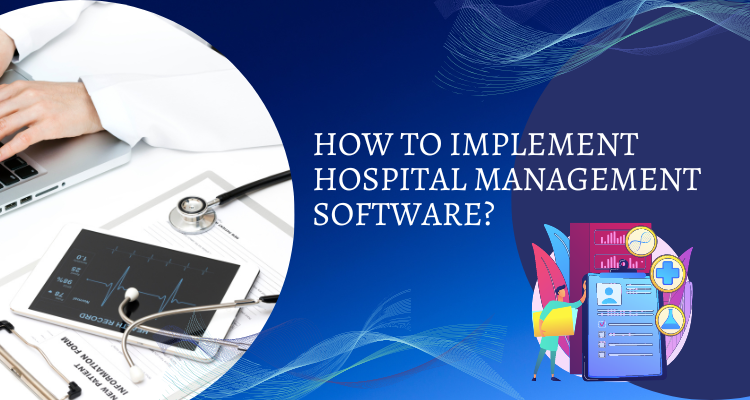
Undoubtedly, the modern healthcare sector is a complex ecosystem that requires meticulous management. Implementing Hospital Management Software, especially in the form of ERP solutions, can significantly streamline operations and enhance patient care. This article delves deep into the practicalities of such an implementation, providing a detailed, step-by-step guide. Our focus is on the unique features and functionalities of healthcare ERP solutions in Saudi Arabia. By understanding how to effectively integrate these solutions, hospitals and other healthcare institutions can unlock significant efficiency gains, elevate the standard of patient care, and stay ahead in this digitally evolving era.
How to implement hospital management software?
Step 1: Define your objectives
The first step towards implementing an ERP system within a healthcare setting, particularly a healthcare ERP in Saudi Arabia, is to clearly define your objectives. Are you aiming for improved patient care, streamlined administrative tasks, enhanced data management, or all the above? Perhaps you’re looking to improve inventory management, optimize scheduling, automate billing, or enhance the overall operational efficiency? Or maybe your goal is to improve decision-making through better data analytics? By leveraging the comprehensive features and functionalities of healthcare ERP solutions in Saudi Arabia, hospitals can better manage their resources, improve their services, ensure a seamless patient experience, and achieve these objectives. This initial step is crucial as it provides direction for the entire implementation process, ensuring that the chosen solution perfectly aligns with the institution’s goals and needs.
Step 2: Select the right ERP solution
The market is flooded with numerous healthcare ERP solutions, each offering unique capabilities. It’s essential to choose a solution that aligns with your needs and budget. When you decide to purchase healthcare ERP solutions in Saudi Arabia, consider factors like ease of use, scalability, customer support, and most importantly, its ability to adapt to future trends in healthcare ERP software in Saudi Arabia. One such solution worth considering is SowaanERP. Known for its robust features, user-friendly interface, and excellent customer support, SowaanERP is designed to cater to the evolving needs of the healthcare sector in Saudi Arabia. Furthermore, it offers the flexibility to adapt to changing demands, making it a reliable choice for healthcare institutions seeking to enhance their operational efficiency and patient care.
Step 3: Develop a project plan
A detailed project plan is the blueprint of your implementation process. It should outline the project scope, timeline, budget, and team responsibilities. While developing the plan, keep in mind the specific features and functionalities of healthcare ERP solutions in Saudi Arabia
. This will also help ensure that your plan is tailored to leverage these functionalities to their full potential, leading to a successful implementation.
Step 4: Data migration
Indeed, data migration is a critical step in the ERP implementation process. Ensure you have a strategy to handle data migration to prevent any data loss or corruption. The robust data handling and security features of healthcare ERP solutions in Saudi Arabia can aid in this process. It ensures a smooth transition and maintaining the integrity of your valuable data.
Step 5: Customization
Customize the ERP software, such as SowaanERP, to fit your specific needs. This could involve configuring settings, creating customized reports, or integrating with other software. The flexibility and modularity of healthcare ERP solutions in Saudi Arabia allow for straightforward customization. It also enables you to tailor the system to best fit your operations, meet your unique needs, and improve overall patient care and experience.
Step 6: User training
Certainly, training your staff to use the new system is crucial for successful implementation. Provide comprehensive training sessions and materials to help them understand how to use the new system effectively. Leveraging the user-friendly design, intuitive features, and extensive functionalities of healthcare ERP solutins in Saudi Arabia, like SowaanERP, can simplify this training process, ensuring a smooth transition for your team. The features and functionalities of healthcare ERP solutions in Saudi Arabia are designed with user-friendliness in mind. This makes the learning curve less steep. It’s important to remember that the training should be ongoing, taking into account new hires, changes in roles, and updates to the software over time. Furthermore, creating a supportive environment where employees feel comfortable asking questions or expressing concerns about the new system can significantly enhance the success of the implementation.
Step 7: Go live and continuous evaluation
After thoroughly testing the system, it’s time to go live. Continuously monitor and evaluate the system’s performance after the implementation. Collect feedback from users and make necessary adjustments. The advanced analytics and reporting features of healthcare ERP solutions in Saudi Arabia can provide valuable insights during this evaluation phase, assisting in continuous improvement.
Conclusion
Looking ahead, future trends in healthcare ERP software in KSA are set to revolutionize the healthcare industry. Implementing an ERP system in a hospital setting can be a complex process. However, with careful planning and execution, it can significantly improve operational efficiency and patient care. Fore surely, by leveraging the advanced features and functionalities of healthcare ERP solutions in Saudi Arabia, healthcare institutions can transform their operations and deliver superior service, staying at the forefront of healthcare innovation.
